|
|
By Franco Simoni
|
|
|
|
In 1958 he celebrated the baptism of the dog from the Maremma Abruzzese shepherd. He was given the name because it currently leads the 'Italian Champion, with the collaboration of talented Prof. Solaro, the C.T. the C.P.MA. and myself, I decided after indicating the ethnic character of the race and completed the standard.
|
|
|
|
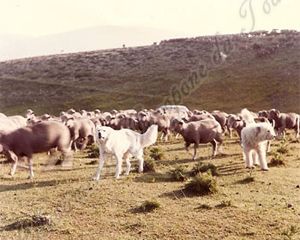
|
From that moment on this, our major Italian breed a new chapter in its long history opened.
Was fair and appropriate to merge the two existing breeds, "the Maremma" and "Abruzzo", because races were not, but if you ever variety, because between them there were no differences, either morphological or physiological level , which had the character of genotipicità.
It seemed rather the result of a compromise and those who, like myself, was following the story and the story of the race, I felt, I remember; Regrets.
|
|
|
|
|
The ENCI deliberated wanted to appease the spirits, soothe the burning passions that animated those who claimed, with drawn sword, and without reason, and claimed: the dog is Maremma; no, the dog is in Abruzzo, and discussed endlessly, without being in agreement, just because they were animated by exasperated parochial spirit, without clear ideas, devoid of technical and historical knowledge, and even common sense.
Neither then he derived a kind of armistice, interrupted occasionally by sporadic verbal confrontation and bickering, which confirmed that the decision and the choice of name had not been definitively accepted, and had left many dissatisfied.
|
|
|
|
|
|
|
|
In this atmosphere had passed, almost thirty years. The race had, and had a big comeback, generated much sympathy, created different interests but, resentment and grumbling again jumped out to provoke new claims and pretensions.
His name was again called into question.
In 1988, in fact, an initiative of the Abruzzo Region has surprised everyone. Promoted by some amateurs and connoisseurs of white sheepdog, who qualified at least as well, with the support of some local politicians, evidently more interested in getting an electoral clientele that the destinies of the dog, reported the ball in the playground, proposing the Enci problem, to ask even the recognition of their local breed, which would give the name of "Abruzzese mastiff".
|
|
|
|
ENCI the resolution of 1958 concerning the name, was triggered by the fact That the Abruzzi and the Maremma, designed to come were the two areas where dog population in Los Angeles Subject, "maritimae", ie affanciantesi lands on the sea, was a moment That, blackberries represented, Present and Active in numerous pastoral Initiatives That area the above said, formed the basis of the main economy.
The Enci had, however, unforgivably, forgot that Abruzzo and Maremma represent the core of a secular system, that of transhumance, that bound, but the dog was not present only in the Abruzzo region, but throughout the Apennines, on the which does not go forgotten, he had originated first, the pastoral activity.
|

|
|
|
|
|
He had forgotten that the Apennines had given birth and life to the shepherds and their livestock: sheep mainly, that during the long winter months, the snow fell abundantly to cover the pastures, forced them to get off the plane, for absolute survival needs.
If the Italian Champion in 1958, had followed a livestock policy, and had taken account of technical principles, such as those of the phylogeny of the races, and taxonomy, as well as had been done for all our agricultural type races, he would give our race a more appropriate name and own, that which belonged rationally: "Apennine breed shepherd," because this, again, is the part of Italy where the white dog appears here and spends much of 'year, from May to November, with the shepherds, here we have their home, their place of residence, that here they leave their family, even when transhuman.
A solution of this type would not have had the appearance of a compromise, but it would have appeared as a solution, albeit brave and radical, was the most rational and such to remove any source of contention, leaving everyone satisfied and quiet.
He would find its justification in the history of Italian highly developed sheep farming and pastoralism, in that story where the sheepdogs are complex events protagonists taking place in a very broad and varied scenery, with the shepherd and the sheep, with such as dogs live together in a close relationship of interdependence, and play each their own role according to their abilities and skills.
|
|
|
|
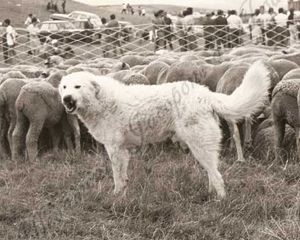
|
The history of Abruzzo from Maremma shepherd dog is now known by all, repeated at every opportunity, he asks pardon myself, if to remember:
in ancient times, a massive migration of nomadic people devoted to agriculture and pastoralism, moved from the center of Asia, across Europe, also reached Italy, crossed the Alps and swept the vast Po Valley, then fertile for abundant crops and streams flowing and to a particularly mild climate, remaining there for long.
|
|
|
|
|
So, in the need for other spaces headed for the South and met the Apennines, that the Italic peoples, having found better living conditions elsewhere, had left uncluttered and helpful. They stopped in the mountainous stretches more affordable and better suited to their lives and that of their animals, then subsequently occupied other traits, less accessible, more bitter and less hospitable; less accessible, more steep, but still essential for the sustenance of their flocks and herds, which in the meantime had grown in number.
The stretch Abruzzese Apennines was affected by this much later migration, because it is situated to the south, but also because the less hospitable by nature and the character of its people.
In fact, it is characterized by large limestone mountains such as the Sibillini Mountains, Reatini, Sabini, Simbruini, Ernici, the Gran Sasso, Velino, Maiella, Meta, and Matese, where every problem is more rude and often, for many times of the year, impossible, for heavy snowfall. Compared to other traits had the advantage of being relatively close to plains, such as those Maremmane, the Laziale and Pugliese, however, when it was possible to access only after opening of passages and crossings and the realization of sheep tracks of existing extensions, following of immense human labors.
Li also repeated Horace writing "nam qualis Molossus aut, aut fulvus Lacones, vis pastoribus friend". He repeats that the dogs of Laconia are tawny, and, today, it is absolutely unacceptable to say, to establish a relationship, that even in the Abruzzo from Maremma sheepdog sometimes appears fawn, considered genetically phase prior to white.
This occurred significantly, so the history remembers him, only in Sec. XV in which the Abruzzo interrupted his millennial isolation and established contacts with Rome and its countryside, with Rieti, Umbria and the Marche and south Puglia, where the flocks, in the summer they were able to flock en masse, by virtue of the Edict of Alfonso I of Aragon º, became active in the year of grace 1447.
I repeat, the Abruzzo until then had been almost totally disconnected from the rest of the country and forced, by its orographic configuration, for an absolute and forced isolation. He resented the late Renaissance humanist motion, laws are also immediate bump shelter of many historic and significant events that, in the meantime had involved and interested in other neighboring peoples
|
|
|
|
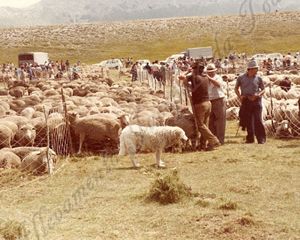
|
Even Rome, which had widened smisuratamente his empire, beyond the peninsular borders, had failed to break this millennial isolation, neither was able to impose its control over the population bellicose and irreducible, closed and protected from their natural impassable borders, a territory which, by the way, did not offer a lot to be desired so much, and to justify a war of conquest.
Abruzzo, then, also had problems amalgam between the various peoples who lived there.
|
|
|
|
|
Equi, Marsi, Peligni, Vestini and Marrucini, in eternal dispute between them, forming a community by the sad and singular destiny for a tenacious and stubborn loyalty to their agricultural forms, economic, social, constantly and inevitably conditioned by the more primitive and more stable of elements: Nature. While this favored the birth of so many ascetics and many saints, isolation, loneliness and lack of unified productivity of arable land, the long winters under the snow, which inexorably determined in the population a state of semiletargo this season, has not allowed the creation of great works and the development of creatures great and even though the people were always devoted to field crops and cattle breeding, the formation of species and a real farm animal breeds. The Abruzzo, therefore, can not boast, unlike other Italian regions the paternity of a breed of cattle, of a horse or pig breed, worthy of significant production capacity and profitability, and even even, and this is extremely significant , of a breed of sheep or goats.
Only in ancient texts mention is made of Animal Husbandry and is an outline of a sheep razzetta: the so-called "Dear d'Abruzzo", located to the south, on the border with Puglia, in triple attitude: milk, wool, meat, and that quickly disappears into history.
At the beginning of the fifteenth century, the Abruzzo sheep population was made up of a population of about three hundred thousand heads, forced to run autarkic, various indigenous breeds, and indefinite. E 'logical to think, deduce and then assert that the presence of dogs, at that time, was in connection with this limited consistency. Maybe three thousand people, where you want to consider a dog every hundred sheep.
|
|
|
|
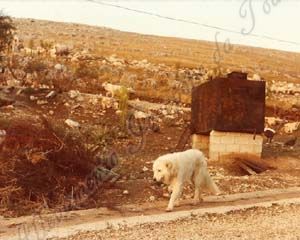
|
While Italy, in the same period, counted on a sheep population of over seven million head, located mainly in the islands, in the South, but also in the center, in the Marche and Tuscany, less the North. And 'always logical to infer, deduce and then assert that the presence of dogs in mainland Italy was very numerous and far superior to that of Abruzzo.
As previously mentioned, only in 1447 the promulgation of the Edict Aragonese and the simultaneous opening of some crossings, the extension of the existing sheep-tracks and the regulation of their use, allowed the Abruzzi shepherds to come out from their borders and establish relationships with regional neighbors and their inhabitants.
|
|
|
|
|
The history shows the occurrence of a natural impetuous transfer of people and animals, so that by the middle of the next century, ie about one hundred years later, the sheep population had increased fivefold. After another hundred years the Abruzzo sheep population had increased more than tenfold, reaching an all time high, about four million head, while in the farmed sheep country were about twelve million head.
Obviously they had entered in Abruzzo a very considerable number of sheep and therefore the dogs. The sheep were introduced Umbria / Marche Apennines and were Apennine race, Vissana and Sopravissana; They came from the Maremma and the Roman countryside, and were the Maremma breed; They came from the Tableland and the captains and they were from Puglia. All races were from large production capacities, not comparable to those of their Gentile d'Abruzzo, disappeared for systematic measures of replacement and absorption cross.
Currently the numerical strength of the Abruzzo sheep population is around six seven hundred chiefs, ricostituitasi after a dreadful decline caused by the sad events of war the last great war. The sheep population has once again replenished with animals from the neighboring regions. Just as it happened in the dog population level that is reconstituted with dogs of other regions. Even the comparative study of genealogies since World War II it documented descent from neighboring regions dogs.
After what has been widely reported does not find any justification the statement, according to which the country of our big white dog in sheep is the Abruzzo Abruzzo and then must call his race.
|
|
|
|
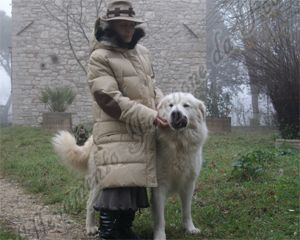
|
Certainly not with slogans like today feel again, or express opinions, superficial and subjective to some judge who calls himself "the breed specialist" and wants to get noticed and make a career, or some "researcher" who consider themselves well informed and custodian of truth.
It is not even valid reason, why in the name of the breed, should disappear "Maremma", just because it is currently in Maremma sheep and then the canine population is significantly reducing the number of round.
|
|
|
|
|
This reduction has been the result of a contingent fact, land reform, which reduced many Pasture spaces, but already many are predicting a new conversion that Nature imposes, and a return to the same past.
You can not even bring up a census of dogs in tow flocks, made at the beginning of the year 972, who gave vague indication of the geographical distribution of this canine population.
E 'out of the question that the white dogs in Abruzzo now frequently encountered, especially in summer, but also meet Umbro Marche Apennines and Tosco Romagnolo, and even less, even in the Apennines Calabrese, and Lucan.
From the above and reported, in light of all the organizations indicated there are no changes and valid reasons why this breed of dog should change the name, let alone there are prerequisites for the existence of another existing white race in Abruzzo, ie " Abruzzo mastiff "that, apart from the name, it is said, must be a fat-like, with ethnic characteristics very similar to those of the Abruzzese Maremma shepherd, except for some little nuance of lines and profiles, not easy to detect.
Unless you want to give it roots in those three thousand dogs around present at the beginning of the fifteenth century, of which we spoke at the beginning of this note, that only history remembers, but which, at least zootecnicamente speaking, They have lost the traces, as indeed have lost the traces of three hundred thousand sheep of the kind of Abruzzo race, of which three thousand dogs were in tow.
It is not negligible either the condition for which, in recent years, many dogs of Abruzzo, presented by their owners, pastors, at various gatherings of Campotosto and L'Aquila, have had the typical award for the Maremma Abruzzo race and consequently the relevant certificate for their enrollment in recognized Italian book.
|
|
|
|
|
Degree in Veterinary Medicine with honors from the University of Perugia, becomes Captain of the veterinary surgeon for the Role Health Officer College Army Vets Pinerolo (TO). After the Second World War is Doctor Civil Veterinarian, Provincial Director of Livestock of the Province of Terni E.E.N.A. Holder of the Chair of Animal Husbandry at the Agricultural Technical Institute "A. Ciuffelli "of Todi, is dedicated since 1950 under the kennel Enci dogs herding of" Jacopone ", the selection of dog breed Shepherd Maremma-Abruzzese and the Caucasus Mountains, which in 1972 was among the fathers founders of the CPMA and author of numerous essays and publications on various books and magazines dog world, as most recently oversaw the drafting of the sections on Pastors Abruzzese Maremma in the books "the Shepherds Italian" De Vecchi Editore.
|
|
|
|
|